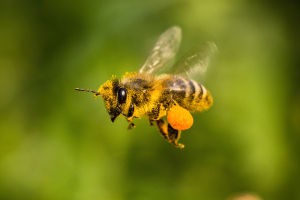Have you ever been amazed by those vibrant tropical fish in aquariums and thought, “I want those at home”? Many of us have tried keeping tropical fish or goldfish, but they don't survive long.
Don't worry—today, we'll walk through simple, smart steps to help you keep your fish happy and healthy.
What You'll Need?
• A proper fish tank
• A heater
• A filtration system
Step 1: Know the Basics
Tropical fish need warm, clean, oxygen-rich water. That means:
• Keep water temperature between 24°C and 28°C (75°F to 82°F)
• Use a good filter
• Make sure there's enough oxygen in the water
Chat with staff at pet stores—they often have great tips!
Step 2: Pick the Right Tank
A bigger tank is always better—it gives fish more space to swim and helps keep the water stable. Just make sure you have room for it at home. And make sure your tank has a good filter system—the bigger the filter, the better.
Step 3: Choose the Right Fish
Don't buy fish just because they look pretty. Each tank has a limit. A general rule is 1 fish (about 5cm long) for every 10 liters of water.
Avoid mixing fish of different sizes or temperaments. Aggressive fish will bully or even eat smaller ones. As a beginner, stick to one kind of easy, low-cost fish like guppies, platies, zebra danios, or angelfish.
Step 4: Prepare the Water
Don't add fish to a brand-new tank right away. Tap water contains chlorine that's harmful to fish. Fill your tank, turn on the filter, and let it run for 3–5 days before adding any fish. This helps the water settle and become safer.
Step 5: Build a Mini Ecosystem
You might notice others have ceramic rings or black sponges under the filter—these are bio media for growing good bacteria. These bacteria clean the water by breaking down waste. Let your filter run during the waiting days so these bacteria can grow. This natural cycle helps keep your fish healthy.
Step 6: Let Fish Adjust Slowly
When you bring fish home, don't dump them straight into the tank. First, float the sealed bag in your tank for about 20 minutes to let the temperature match. Then, slowly add tank water into the bag bit by bit before releasing the fish. This helps them adjust to both temperature and water chemistry.
Step 7: Watch the Water Temperature
Use a heater set to 25°C or 26°C (77°F–79°F). Also use a thermometer to keep track. If your heater runs constantly or doesn't reach the right temp, you might need a more powerful one. In hot summers, consider using a cooling system.
Step 8: Create a Daily Light Routine
Fish need rest too! Turn on the tank light for 5–8 hours a day, then turn it off. You'll notice your fish are more active with light and calmer in the dark.
Step 9: Change Water the Right Way
Never do a full water change. That can shock your fish. Here's how to do it safely:
1. Let tap water sit for a few days so the chlorine evaporates
2. Change about 1/4 to 1/3 of the tank water once a week
3. Add new water slowly to avoid sudden temperature changes
4. Rinse the white sponge in your filter regularly
5. Never clean ceramic rings or bio sponges—they hold the helpful bacteria. If they get too dirty or old, replace only one-third at a time
Step 10: Feeding (Tip Cut Short)
Make sure not to overfeed—only give them what they can eat in a couple of minutes. More feeding tips coming soon!
Let's make your tank a happy home for your fish! If you've ever had fish that didn't survive long, which step above do you think you missed? Tell us, Lykkers—we're here to help each other!


